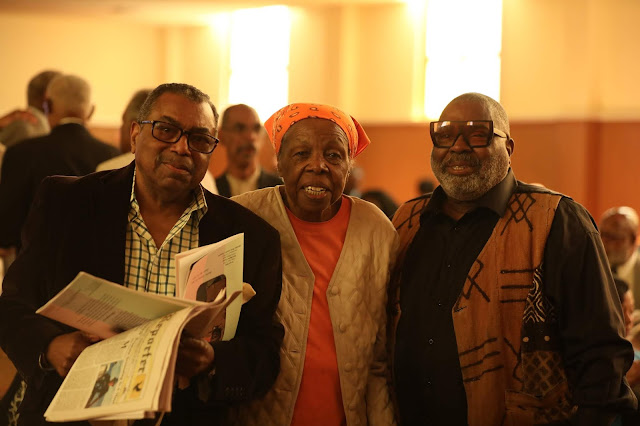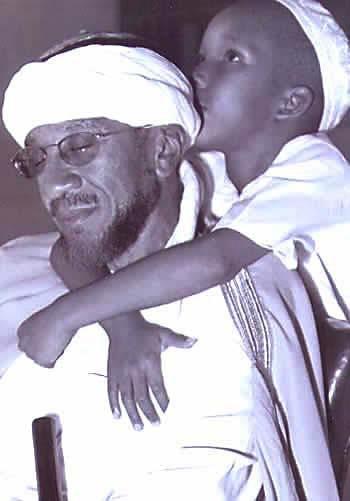Marvin X reviews Iya Iya’s House of Burning Souls
Lower Bottom Playaz production of three one-woman plays
by North American African Women
Glory by Ayodele Nzinga
Too Much Woman for this World by Kharyshi Wigintons
Tasha by Cat Brooks
Produced and Directed by Dr. Ayodele Nzinga
Flight Deck Theatre
1540 Broadway
Oakland CA
9/6/19
Photos Adam Turner
When Iya Iya’s House of Burning Souls opened with Ayodele’s Glory, I immediately sensed something was amiss in the production order, simply because I know well the dramatic power of my star student from the beginning of our artistic relationship that began when she enrolled in my Theatre class at Laney College, 1981.
Just the other day, a competitor of Serena Williams referred to her as a “fucking beast” in the most positive sense of the word. Similarly, Ayodele Nzinga fits the beast mode with her awesome dramatic skills as playwright, actor, director and producer. She is indeed the Grand Diva of Bay Area Theatre, black and white. So as the lights came up, I was puzzled that the show would open with Glory. And it wasn’t because I’d reviewed her performance of Glory at Thomas Simpson’s Afro-Solo Theatre and knew the script, and had made my suggestions to her after the Afro-Solo show.
Yes, my beloved student is a “fucking beast” that easily overwhelms any audience with her dramatic acumen. As I departed the theatre (also in attendance was our national treasure and sponsor of the production, Alice Walker), I told Ayo what I said above. “Ayo, you gotta change the arrangement.” She said why? “Because no one can follow you!” She was politely and humbly dumbfounded!
But after viewing the three plays, I say again the evening should have ended with Glory, not only because of her skills as actor and playwright, but her superior understanding of what Dr. Cheikh Anta Diop (Cultural Unity of Africa) called the tragic-comic African or Southern Cradle dramatic tradition as opposed to the European or Northern Cradle tradition of tragedy as dominant theme. The African them is based on nature, e.g., the annual ebb and flow of the Hapi or Nile River, the death and rebirth of crops, allowing optimism to reign supreme. Even death is followed by the joy of Resurrection, alas, even Shakespeare's tragedies are overwhelmed by the European adoption of the Southern Cradle myth of Resurrection.
As Ayo weaved her mythological narrative of grandmother, mother and self, she made reference to Kemetic or Nile Valley culture, Congo and West African culture before her tale takes us through the door of no return, the graveyard in the Atlantic Ocean, echoing Amiri Baraka:
In the Atlantic Ocean
is a railroad of human bones….
The king sold the farmer to the ghost….
Her family arrives in the wilderness of North America to begin their sojourn of sorrow and dread, impossible dreams that must be dreamed by grandmother, discarded by mother but revived by daughter.
It is the ending of her inter-generational drama that put her in the “beast mode” and secured her in the Diopian African tradition of tragi-comedy or all’s well that ends well, to borrow from the Northern Cradle Shakespearean tradition, although, again, tragedy is the dominant theme in this dramatic literature, i.e., murder, lust for power that extends into the now with the European/American pervasive white supremacy and the concomitant full blown denial! FYI, if the Northern Cradle folks would come out of De Nile (the true name of De Nile River is Hapi) they would arrive at Hapi!
After weaving her autobiographical narrative through generations of women, she ends on the positive, as the original kemetic drama of resurrection passes through crucifixion to resurrection, ending with ascension (the prototypical Osirian Drama of Resurrection, stolen or adopted by the Christians and sixteen other nations with crucified saviors before Christ).
Too Much Woman For This World by Kharyshi Wiginton examined the North American African woman’s body in voice, space, place and time. She gave us a dynamic deconstruction of the North American African woman’s body, especially the fluffy woman, although she never used this term that is en vogue with the Hip Hop generation. Her exploration of her over-sized body was a very necessary psycho-sociological deconstruction of what “fluffy girls” go through trying to adapt to the skinny girl ideal that often leads to physical, mental and sexual anorexia. What man wants a fat woman, her uncle chided her? Who will marry her? Yet she persists in her body love. Her choreography to Coltrane and Miles Davis was outstanding and dispelled any notion in our minds that only skinny girls can dance. Her gracious moves would make any man desire her, and as I have been informed by Hip Hop young men, they want a “fluffy girl”, not for her dance moves, although Kharyshi was sexually inviting with her choreography, but young men desire “fluffy girls” because they know they will be well, none of that skinny girl vegan shit! LoL
But Karyshi’s issues are problematic to the extreme. No matter her addiction to food and the consequences thereof, she has family members with a myriad addictions, drugs, alcohol and other toxic substances, not to mention the most cunning and vile addiction to white supremacy!
She decides to love herself, her body, no matter the size, thus ends her narrative. With my fat ass, I was totally in harmony with her love of body. More than one of my ex-partners will tell you that they discovered Marvin X was not ashamed to parade around the house in the nude, despite his fat black ass!
Cat Brook’s Tasha ended the evening. Cat is a consummate actress, plus activist. Her dramatization of the real life story of Natasha was riveting and horrifying, ending with a Black Panther Party style shootout in the Oakland tradition, but did not approach Ayodele’s Diopian tragi-comedy in the African or Southern Cradle tradition. After all, the Black Panther were valiant in their armed self defense of community, but were tragically doomed from the start as they were no match against the awesome power of the US military.
Tasha suffered schizophrenia and Cat gave us a most wonderful
psycho-drama of Tasha’s ultimate destruction by the state police. We were warned before the performance of Tasha that it might be overwhelming for those in the audience who’ve suffered the lost of loved ones by the police. The mixed media and Cat’s dramatic performance was indeed overwhelming in delineating state violence and the hapless condition of the mentally ill.
I sincerely appreciate Cat for giving us a deeper understanding of murder under the color of law, especially when the victim suffers mental disabilities.
Cat’s script was as profound as her performance, yet, I must repeat that Ayo’s Glory gave us the best hope and strength to finish this freedom ritual of North American Africans. Yes, Ayo and a character in Tasha used a rife to settle matters, but a spiritual problem will not be solved by a physical solution.
Ayo’s Glory presented the solution that lies in the deep structure of North American African mythology, beyond guns, body size, but deep down in the myth-ritual of North American African culture and consciousness shall arise the final solution. It's been 400 years, count on another 200 to extricate us from the ravages of white supremacy.
--Marvin X








































